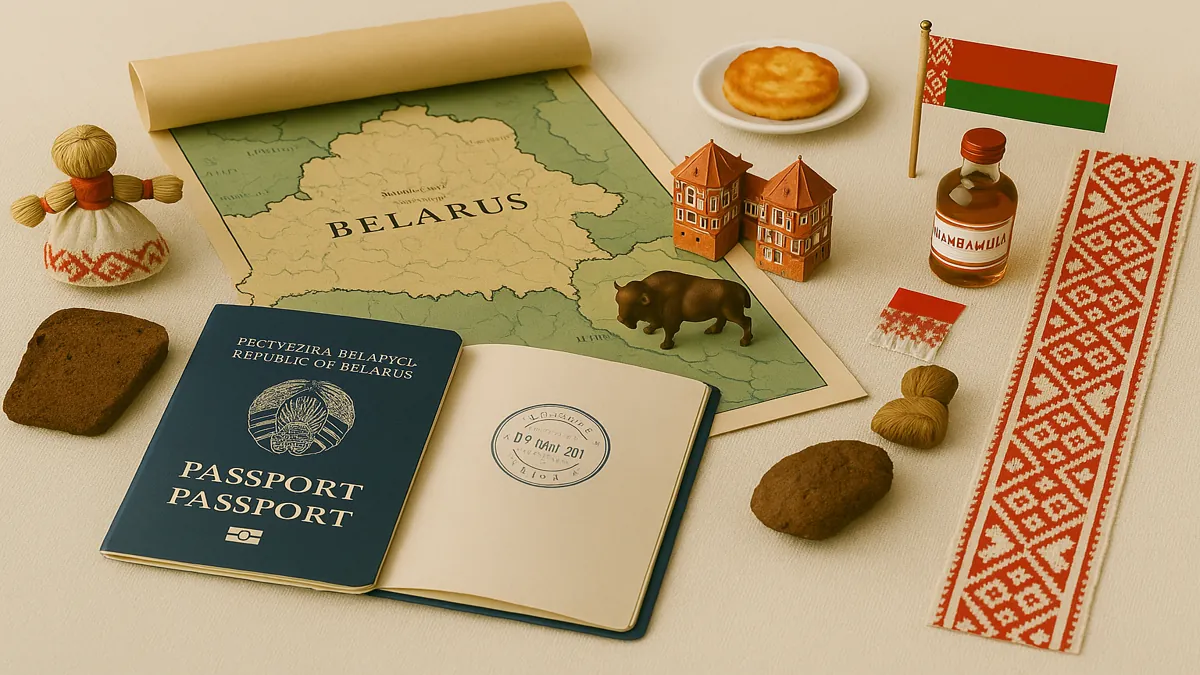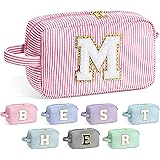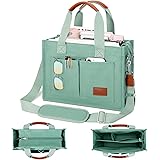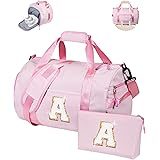Belarus Travel Guide 2025: The Ultimate Handbook for First-Time Visitors
Important Safety Notice: As of 2025, many Western governments, including the U.S. Department of State, the UK, and Canada, advise against all travel to Belarus due to the volatile security environment, the risk of arbitrary enforcement of laws, and the country’s support of Russia’s war in Ukraine. This guide is provided for informational purposes only. If you decide to travel, exercise extreme caution, understand the risks, and follow your government’s advice closely.
Planning a potential adventure to Belarus in 2025? You’ve picked one of Europe’s most enigmatic and off-the-beaten-path destinations. This ultimate guide is packed with essential information for a trip. From exploring the monumental Soviet-era architecture of Minsk to discovering ancient forests and historic castles, we’ve got you covered.
Belarus, a land of captivating authenticity, offers a unique blend of Slavic culture, pristine nature, and a history that stands apart. It’s a destination that intrigues the curious traveler, whether you’re wandering through clean, wide avenues, exploring UNESCO World Heritage sites, or savoring hearty, traditional flavors.
Get ready to understand what makes Belarus one of Europe’s most unique countries. Let’s dive into the 15 essential tips that will help you plan, budget, and experience the very best of this nation, keeping safety as the top priority.
Table of Contents
- 1. Why Visit Belarus in 2025?
- 2. Best Time to Visit Belarus
- 3. Top Destinations in Belarus for First-Timers
- 4. Planning Your Belarus Trip: A Step-by-Step Guide
- 5. Accommodation in Belarus: Where to Stay
- 6. Getting Around Belarus: Transportation Guide
- 7. How Much Does a Trip to Belarus Cost?
- 8. Must-Try Foods and Cultural Delights
- 9. Staying Safe in Belarus
- 10. Solo Travel in Belarus
- 11. Traveling Belarus with Family or as a Senior
- 12. Digital Nomads in Belarus
- 13. Essential Packing List in our Belarus Travel Guide
- 14. FAQs for First-Timers
- 15. What’s Next? More Guides to Explore
1. Why Visit Belarus in 2025?
Belarus is a land of unique character and deep history. For those curious about Eastern Europe, it offers a glimpse into a culture shaped by centuries of resilience. Its blend of Soviet legacy, pristine nature, and historic sites makes it a subject of fascination.
The Allure of “Europe’s Last Dictatorship”
Imagine exploring the grand, imposing architecture of Minsk, a city rebuilt as a Soviet ideal, wandering through the primeval Białowieża Forest, home to European bison, or visiting the fairytale-like Mir and Nesvizh Castles. Belarus offers these unique sights. The country is known for its cleanliness, safety from petty crime, and a landscape of forests and lakes.
From the wide avenues of Minsk to the historic streets of Brest, Belarus provides a journey that is different from any other in Europe. It’s a place to explore a complex history and a culture that has preserved its own distinct identity.
Visa & Entry Situation for 2025
The visa situation for Belarus has become more complex. While a visa-free regime for citizens of many countries (including the EU and US) for stays up to 30 days via Minsk National Airport existed, the political climate has made entry and exit uncertain. Land borders with EU countries (Poland, Lithuania, Latvia) have faced significant restrictions and closures. It is absolutely essential to check the latest visa policies and entry requirements with the nearest Embassy of Belarus before making any plans.
Looking for the best hotel or flight deals?
Plan your trip with ease using the Expedia search tool below. From charming boutique hotels to luxury resorts, this widget helps you compare top options in seconds — flights included!
2. Best Time to Visit Belarus
Choosing the right time to visit Belarus can significantly enhance your experience. The country has four distinct seasons, each offering unique charms.
Spring (April-May): Awakening Nature & Pleasant Weather
- Weather: Cool and crisp, with temperatures from 10-20°C (50-68°F). Perfect for city sightseeing as nature awakens.
- Crowds: Generally low tourist numbers.
- Pros: Ideal weather for walking tours in Minsk and exploring parks. Victory Day (May 9th) is a major public holiday with large-scale celebrations.
- Cons: Weather can be unpredictable with spring showers.
Summer (June-August): Long Days & Vibrant City Life
- Weather: The warmest months, with temperatures often reaching 20-25°C (68-77°F).
- Crowds: The most popular time for visitors, though still quiet compared to other European countries.
- Pros: Best weather for enjoying outdoor cafes in Minsk and exploring the country’s many lakes and forests. All attractions are open with longer hours.
- Cons: Can be rainy at times.
Autumn (September-October): Golden Hues & Harvest Time
- Weather: Mild and often beautiful, with temperatures from 10-18°C (50-64°F).
- Crowds: Fewer visitors than in summer.
- Pros: Often considered the best time to visit. The countryside is beautiful with autumn colors, making it great for visiting national parks and castles.
- Cons: Days get shorter, and it can get cold and damp by late October.
Winter (November-March): Snowy Charm & Festive Atmosphere
- Weather: Cold, with temperatures often dropping well below freezing, from -10 to 0°C (14-32°F). Snow is very common.
- Crowds: Very few tourists.
- Pros: Excellent for budget travel. Minsk has a charming festive atmosphere for Christmas and New Year. A chance to experience a true Eastern European winter.
- Cons: Very cold, requiring proper winter clothing. Shorter daylight hours.
Recommendation for First-Timers: For the most pleasant weather, aim for late spring (May-June) or early autumn (September).
Make Your Travel Moments Go Viral — Instantly
Your next viral Reel and Tiktok is just a Flipstik away. Film hands-free on buses, beaches, or balconies—anywhere your phone can stick.
🎯 Click here and gear up like a creator!3. Top Destinations in Belarus for First-Timers
For a country so large, the main points of interest for a first-time visitor are quite concentrated and accessible.
Minsk: The Resilient Capital
Completely rebuilt after WWII, Minsk is a fascinating showcase of Stalinist architecture, grand avenues, and vast parks. Explore the monumental Independence Avenue, the historic Trinity Suburb, and the poignant Island of Tears war memorial. The city is impeccably clean and serves as the perfect base for your explorations.
Mir Castle & Nesvizh Castle: UNESCO Treasures
These two stunning castles are a must-do day trip from Minsk. The 16th-century Mir Castle is a breathtaking example of Gothic, Baroque, and Renaissance architecture. Nearby, the Nesvizh Palace was the historic home of the Radziwiłł dynasty, a sprawling complex with beautiful gardens. Both are UNESCO World Heritage sites.
Brest: A City of History
Located on the border with Poland, Brest is famous for the heroic defense of its 19th-century fortress during the opening days of WWII. The Brest Hero Fortress memorial complex is a vast and deeply moving Soviet-era monument that is a key site in Belarusian national identity.
Białowieża Forest National Park: Primeval Nature
Straddling the border with Poland, this is one of the last and largest remaining parts of the immense primeval forest that once stretched across the European Plain. A UNESCO World Heritage site, it’s home to the European bison (zubr) and offers a chance to experience truly wild nature.
Grodno: A Touch of the West
Close to the borders of Poland and Lithuania, Grodno feels more “Western” than other Belarusian cities, having escaped major WWII destruction. It boasts a charming historic center, numerous churches (both Catholic and Orthodox), and a beautiful setting on the Neman River.
4. Planning Your Belarus Trip: A Step-by-Step Guide
Planning a trip to Belarus requires careful attention to detail, especially regarding entry requirements and the current political situation.
Step 1: Check Travel Advisories & Visa Rules (Crucial)
Before anything else, check the official travel advisory from your government. As of 2025, many advise against all travel. Then, verify the current visa policy with the Embassy of Belarus. Do not book flights or accommodation until you are 100% certain of the entry requirements and have deemed the risks acceptable.
Step 2: Setting Your Budget & Travel Style
Belarus is one of the most affordable countries in Europe. Decide if you want a city-focused cultural trip, a historical tour, or a nature-based adventure.
Step 3: Crafting Your Itinerary
For a 3-4 day trip, focus on Minsk and a day trip to Mir and Nesvizh Castles. With 5-7 days, you could add a visit to Brest. A car is not essential as organized tours and public transport are available from the capital.
Step 4: Booking Flights & Accommodation
If you proceed with travel, book flights to Minsk National Airport (MSQ). Accommodation is plentiful and affordable, but it’s wise to book options with free cancellation.
Step 5: Securing Travel Insurance & Registration
Travel insurance is mandatory for visiting Belarus. You must have a policy that is valid in Belarus, and you may be required to show proof at the border. Upon arrival, foreigners must register with the local authorities within 10 days, a process often handled by hotels.
5. Accommodation in Belarus: Where to Stay
Belarus offers a good range of affordable accommodation, from Soviet-era hotels to modern apartments.

Hotels: From Grand to Modern
Minsk has a mix of large, Soviet-era hotels that have been renovated and modern international chain hotels. They offer good value compared to other European capitals and are often centrally located.
Apartments: The Local Choice
Renting a private apartment is very popular and cost-effective, especially for longer stays. Platforms like Booking.com have numerous listings. This gives you more space and a chance to live like a local.
Guesthouses & Farm Stays (Agrotourism):
In rural areas, agrotourism is a growing sector. Staying in a traditional guesthouse or on a farm offers a unique look into Belarusian country life, with home-cooked meals and warm hospitality.
Hostels: Social & Budget-Friendly
Minsk has a decent and friendly hostel scene. They are perfect for solo travelers and those on a tight budget, offering dorm beds and private rooms. They are great places to meet other travelers.
6. Getting Around Belarus: Transportation Guide
Navigating Belarus is straightforward and affordable, with a reliable public transport system.
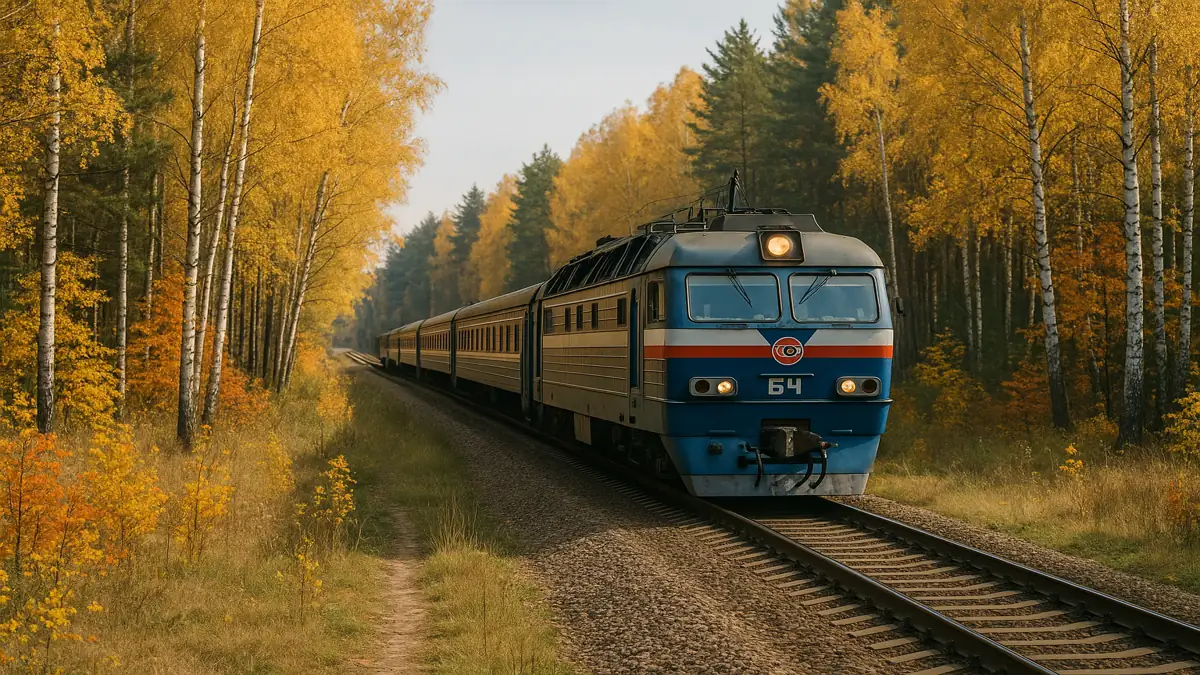
Public Transport in Minsk (Metro)
- Pros: The Minsk Metro is the backbone of the city’s transport. It’s efficient, incredibly cheap, and the stations themselves are often beautiful examples of Soviet design.
- Cons: The network is not huge (only three lines), but it covers most key areas for a tourist.
Marshrutkas (Minibuses) & Buses
- Pros: These fixed-route minibuses and regular buses are the primary way to travel between cities and to major attractions. They are frequent and inexpensive.
- Cons: They can be crowded, and drivers often depart only when the bus is full. Luggage space can be limited.
- Booking: You generally go to the central bus station (Tsentralny Avtovokzal) and find the bus with your destination.
Trains
- Pros: The Belarusian railway system is reliable, safe, and very affordable. It’s a comfortable way to travel between major cities like Minsk, Brest, and Grodno.
- Cons: Can be slower than marshrutkas for some routes.
Taxis & Ride-Sharing
- Pros: Taxis are very affordable. Ride-sharing apps like Yandex Go are widely used in Minsk and are the easiest and safest way to get a taxi with a fixed price.
- Cons: Hailing a taxi on the street may lead to inflated prices; always use an app.
Driving (Car Rental)
- Pros: A rental car offers the most flexibility for exploring the countryside. Main roads are generally in good condition.
- Cons: Not necessary for a first-time trip focused on Minsk and major sites. Local driving styles can be different. Be aware of strict traffic laws and police checks.
Ready to book your train tickets hassle-free?
Search routes and compare prices on Trainline – your one-stop platform for rail travel across Europe.
7. How Much Does a Trip to Belarus Cost?
Belarus is consistently ranked as one of the cheapest countries to visit in Europe. Your money goes a long way here, making it a fantastic destination for budget-conscious travelers.
Daily Cost Estimates (Per Person)
- Budget Traveler: €25-€40 / $28-44 USD per day
- Accommodation: Hostel dorms.
- Food: Canteen-style restaurants (stolovaya), supermarket meals, cooking your own food.
- Transport: Public metro and buses.
- Activities: Free activities like parks, walking tours.
- Mid-Range Traveler: €50-€90 / $55-100 USD per day
- Accommodation: Private apartment rentals, budget hotels.
- Food: Eating out at casual restaurants and traditional cafes.
- Transport: Using ride-sharing apps (Yandex Go), taking organized day tours.
- Activities: Paid attractions like castle and museum entries.
- Luxury Traveler: €100+ / $110+ USD per day
- Accommodation: Top-tier hotels in Minsk.
- Food: Fine dining restaurants.
- Transport: Private driver, premium car rental.
- Activities: Private tours, opera or ballet tickets.
Money-Saving Tips:
- Eat at a “Stolovaya”: These are self-service canteens offering traditional food at very low prices. A true local experience.
- Use the Metro: In Minsk, a metro token costs just a few cents. It’s the cheapest way to get around.
- Shop at Komarovsky Market: Buy fresh produce, cheese, and snacks for very low prices at Minsk’s main indoor market.
- Drink Local Kvass: In summer, this traditional fermented rye bread drink is sold on the street and is cheap and refreshing.
8. Must-Try Foods and Cultural Delights
Belarusian cuisine is hearty, wholesome, and heavily based on potatoes, grains, and pork. It’s comforting and delicious.
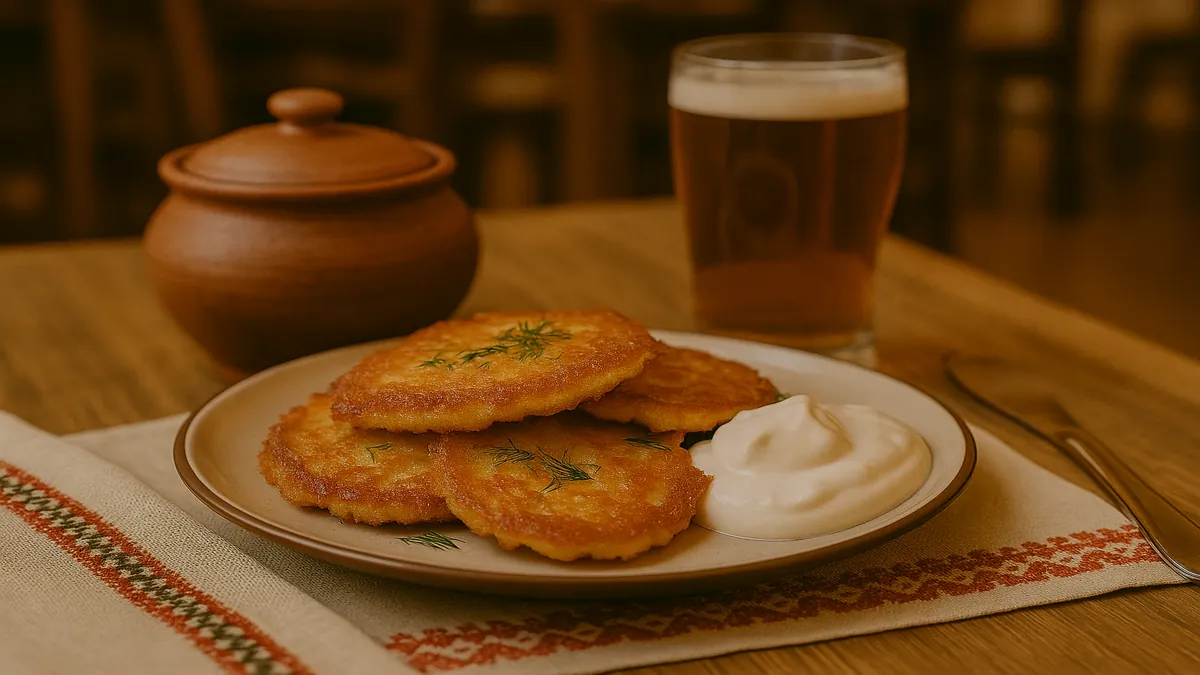
Iconic Belarusian Dishes
- Draniki: The national dish. These are savory potato pancakes, often served with sour cream (smetana) or a mushroom sauce.
- Machanka: A thick pork stew, often served with pancakes (blini) or draniki which are used to dip into the rich gravy.
- Kolduny: Stuffed dumplings, similar to Polish pierogi or Russian pelmeni, often filled with meat, potatoes, or cheese.
- Solyanka: A thick, sour, and spicy soup that is popular across Eastern Europe, often made with various kinds of meat, pickles, and olives.
- Borscht: While often associated with Ukraine, the beetroot soup is a staple here too, served hot with sour cream.
- Krambambula: A traditional alcoholic beverage made with honey and spices, similar to mead.
The “Stolovaya” Experience
For an authentic and budget-friendly meal, visit a stolovaya (canteen). These self-service restaurants, often remnants of the Soviet era, serve simple, traditional Belarusian food and are popular with locals from all walks of life.
Cultural Etiquette & Local Customs
- Hospitality: Belarusians can appear reserved at first but are very warm and hospitable people. If invited to a home, bringing a small gift like chocolates or flowers is a kind gesture.
- Language: The official languages are Belarusian and Russian. Russian is spoken by almost everyone. English is not widely spoken outside of the tourist industry in Minsk. Learning a few words in Russian (“Spasibo” for thank you, “Zdravstvuyte” for hello) will be extremely helpful.
- Tipping: Tipping is not obligatory and not widely practiced, but it is appreciated for excellent service in restaurants (5-10%).
9. Staying Safe in Belarus
CRITICAL NOTE: The political and security situation in Belarus is volatile. Arbitrary enforcement of laws is a significant risk, and political tensions are high. Protests and public gatherings should be avoided. Foreign citizens have been arrested. Follow your government’s travel advisories strictly.
General Safety Tips (Under Normal Circumstances)
- Petty Crime: Belarus has a very low rate of street crime and theft. It is generally very safe to walk around, even at night.
- Police: Police presence is common. Always carry your passport and visa/registration documents with you, as you can be stopped for checks.
- Photography: Be very careful about what you photograph. It is forbidden to take pictures of government buildings, military installations, and personnel. Avoid it to be safe.
- Politics: Do not engage in any political discussions or activities. This is extremely important.
Emergency Numbers
- The universal emergency number is 112. Other numbers include 101 (Fire), 102 (Police), and 103 (Ambulance).
10. Solo Travel in Belarus
Given the current travel advisories, solo travel to Belarus is not recommended. The risk of arbitrary detention and the difficulty in obtaining consular assistance make independent travel particularly hazardous. Under normal circumstances, Belarus is safe from a crime perspective, but the political risks currently outweigh this.
If you must travel, doing so with a reputable, registered tour group would be a safer option than traveling alone.
11. Traveling Belarus with Family or as a Senior
Due to the unpredictable security situation and limited consular support, travel to Belarus with family or as a senior is not recommended at this time. The stresses and risks associated with the current environment are significant.
Considerations for Future Travel
- For Families: Minsk offers many large parks, a children’s railway, and a circus, making it quite family-friendly. The country is clean and safe from a community perspective.
- For Seniors: The pace of life is relaxed. However, accessibility can be an issue in older buildings and on public transport. The reliance on the Russian language could also be a barrier.
12. Digital Nomads in Belarus
Belarus is not a suitable destination for digital nomads in the current climate. Internet access can be restricted by the government, financial transactions can be difficult, and the overall political environment is not conducive to the freedoms required for a digital nomad lifestyle. There is no specific digital nomad visa program.
Looking for a smarter way to manage your travel money? Wise offers real exchange rates with no hidden fees, making it the perfect companion for international trips.
13. Essential Packing List in our Belarus Travel Guide
Packing for Belarus is about preparing for four distinct seasons and being practical.
Clothing
- Layers: Essential for adapting to changing temperatures, especially in spring and autumn.
- Comfortable Walking Shoes: You’ll be doing a lot of walking on city streets and in parks.
- Rain Jacket or Umbrella: Rain is possible throughout the year.
- Warm Clothing (for winter): A proper heavy winter coat, thermal layers, hat, gloves, scarf, and waterproof boots are non-negotiable for a winter trip.
- Slightly Dressier Outfit: For a night out at the opera, ballet, or a nice restaurant in Minsk.
Essentials & Accessories
- Universal Travel Adapter: Belarus uses Type C and F plugs (two round pins).
- Portable Power Bank: For charging devices on the go.
- All Necessary Documents: Passport, visa (if required), mandatory medical insurance, hotel bookings. Keep digital and multiple physical copies.
- Cash: While cards are accepted in Minsk, having cash (Belarusian Rubles) is useful, especially outside the capital.
- Translation App: An app with offline Russian language capability is highly recommended.
As an Amazon Associate, we earn from qualifying purchases.
14. FAQs for First-Timers
Here are some frequently asked questions for those considering a trip to Belarus.
Is it safe to visit Belarus in 2025?
No. Most Western governments advise against all travel to Belarus due to the volatile security situation, arbitrary enforcement of laws, and the ongoing war in neighboring Ukraine. Travel is at your own risk.
What currency does Belarus use?
Belarus uses the Belarusian Ruble (BYN). The Euro or US Dollar are not generally accepted, but are the easiest currencies to exchange.
Is English widely spoken?
No. English is not widely spoken, even in Minsk. Staff at major hotels and some restaurants may speak English, but otherwise, you should not expect it. Russian is the most useful language for a traveler.
Is Belarus expensive?
No, Belarus is one of the most affordable countries in Europe. It offers exceptional value for money on accommodation, food, and transport.
Do I need a visa for Belarus?
Policies are subject to change. Historically, a 30-day visa-free regime existed for entry/exit via Minsk airport. However, due to the political situation, you must check the absolute latest requirements with an official Belarusian embassy before making any plans.
What is the best way to get around?
In Minsk, the metro is excellent. For travel between cities, marshrutkas (minibuses) and trains are efficient and cheap. For convenience, especially for visiting castles, organized tours from Minsk are a good option.
15. What’s Next? More Guides to Explore
We hope this guide has provided a clear and honest overview of travel to Belarus. While the country holds unique historical and natural treasures, the current situation requires extreme caution and careful consideration of official travel advisories.
Stay safe in your travels, wherever they may take you!
Related Articles to Inspire Your Next Adventure:
🇪🇺 Western Europe
🇪🇺 Southern Europe
🇪🇺 Northern Europe
🇪🇺 Central Europe
🇪🇺 Eastern Europe & Baltics
🌍 Continental Overview
References:
European Union. (2025, April 14). Revised timeline for the EES and ETIAS. Retrieved from Official EU Site
